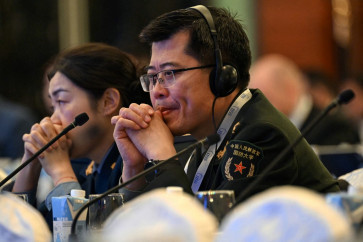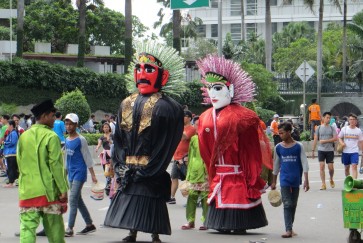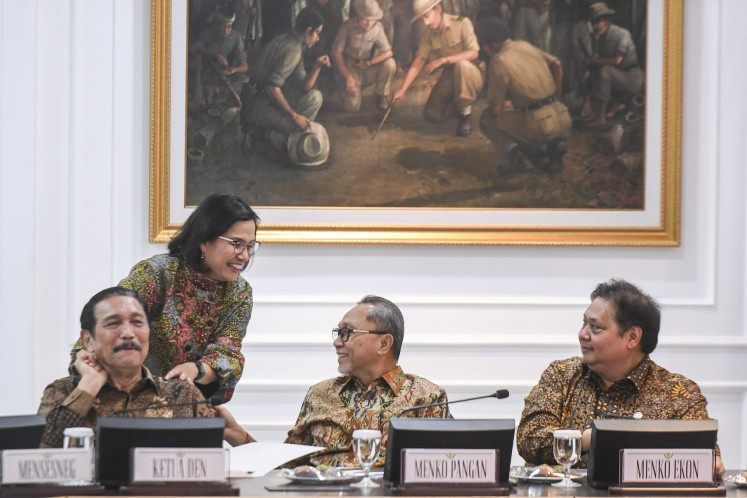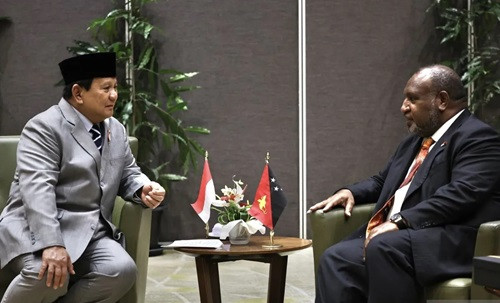Minimarkets drive modern trade growth
Although many Indonesians prefer to shop at traditional retailers, a rapid expansion in modern retail outlets is continuing partly fueled by the sharp increase in the number of minimarket outlets, a recent Nielsen survey concluded
Change text size
Gift Premium Articles
to Anyone

A
lthough many Indonesians prefer to shop at traditional retailers, a rapid expansion in modern retail outlets is continuing partly fueled by the sharp increase in the number of minimarket outlets, a recent Nielsen survey concluded.
Nielsen retail measurement services director Teguh Yunanto said Tuesday the number of modern stores jumped 38 percent to almost 18,152 stores last year compared to 13,190 stores in 2009.
“The growth in the number of modern stores is mainly due to the convenience they offer customers apart from their active promotional activities through mass media,”
he said.
Teguh also noted the one-stop shopping concept used by modern stores gained more importance in recent years and partly contributed to such robust growth.
The Nielsen study showed the robust expansion of modern stores was driven by a 42 percent increase in the number of minimarket to 16,922 outlets last year from 11,927 outlets in 2009 and a 23 percent increase in the number of hypermarkets to 154.
The study also showed 78 percent of modern stores were located in Java, 11 percent in Sumatra and 11 percent in other islands. Stores in Sumatra recorded the highest growth at 55 percent, followed by those in other islands outside Java and Sumatra at 42 percent with Java trailing at 35 percent.
Traditional retailers continue to dominate the market with more than 2.4 million stores, 47 percent of them located in urban areas, Teguh said.
However, the Nielsen survey showed the number of traditional trade stores in urban and rural areas dropped 4 percent and 2 percent respectively in 2010. “This drove the growth of traditional stores down 1.5 percent from 2009,” it said.
The shift away from traditional retailers was in line with the overall performance of retail stores, which saw its number drop 1.3 percent to 2.52 million stores last year from 2.56 million stores in 2009, the data showed.
Teguh said the number of stores in urban and suburban areas rose slightly by 0.7 percent to 1.67 million last year from 1.68 million in 2009, while the number of stores in metropolitan areas such as Bandung and Surabaya decreased 5.2 percent from 886,000 to 840,000.
“Retailers tend to open their stores in densely populated areas. As people migrate to suburban areas, stores are growing significantly in those areaa in metro cities,” Teguh said.
The Nielsen retail establishment survey conducted at the end of last year covered 250,000 traditional as well as modern stores selling packaged goods such as detergent, soap, shampoo, candy and bottled drinks, in more than 3,000 villages throughout the country.
The Nielsen study highlighted two specialized stores with significant growth last year: cosmetic stores and semi-retailers, which grew 17 and 5 percent respectively.
Cosmetic stores are generally located in a market or on main roads selling health and beauty products, while semi-retailers serving both end users and other retailers.
“Most Indonesians still believe that opening up stores is a great business idea,” Teguh said. “But retailers need to think about differentiating themselves from their competitors.”
“One-stop shopping is growing but that is today’s format. In the future, stores that specialize will grow,” he added. (lnd)









